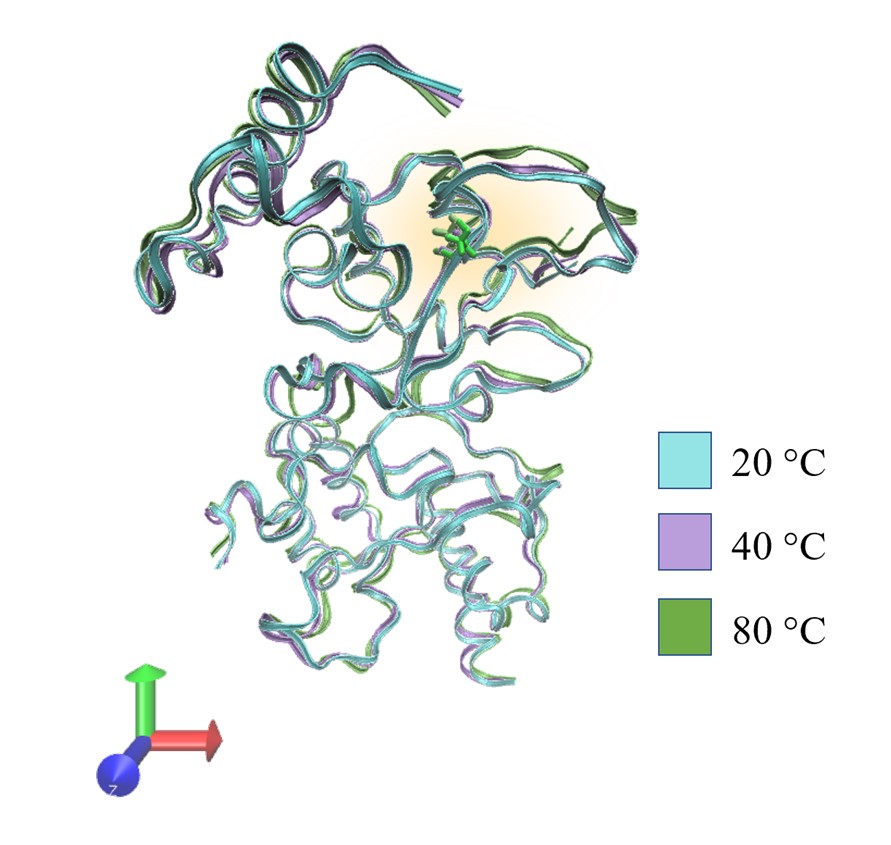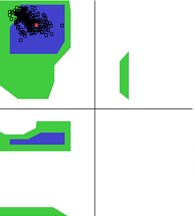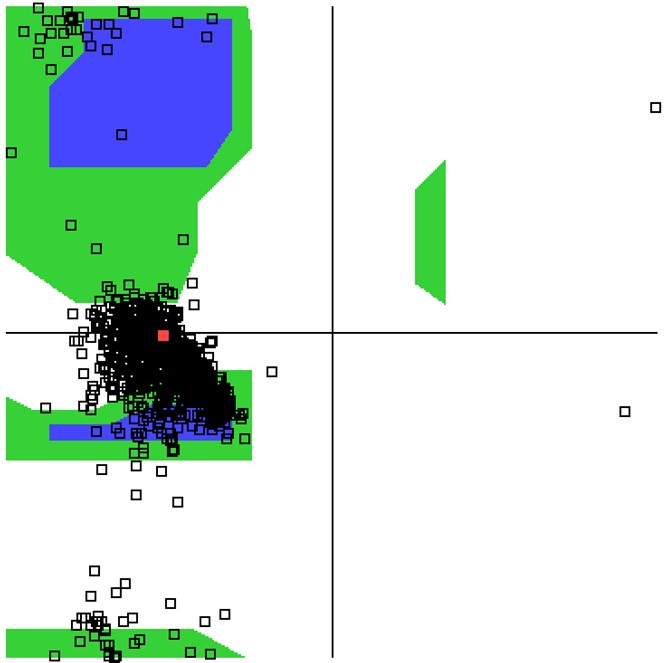Computational Structure-Function Relationships for the CRISPR-Cas9 HNH Domain
Tyler Walker
Bredesen Center for Interdisciplinary Research, University of Tennessee
This page includes a movie of an alanine-mutated HNH domain. The lysine 82 residue, part of the allosteric communication pathway that allows the HNH to recognize the target DNA, is mutated to alanine. Images of the temperature-modulated structure are also included. Ramachandran plots are used to quantify the change in protein structure between the wild-type and mutated HNH domain.
CRISPR-Cas9 is revolutionizing biochemistry and accelerating the pace of gene study. Despite this, the mechanisms of action for the CRISPR-Cas9 complex are poorly understood. Understandings of factors influencing successful target DNA cutting are currently limited to speculation and rules-of-thumb. As an initial study into the structure-function relationships between the HNH-DNA cleaving-domain's amino acid sequence and conformation, this work uses two cases of alanine mutations and a simulated protein denaturation protocol to assess the structural roles of a catalytic residue, His67, and an allosteric communication pathway residue, Lys82. These preliminary results suggest that the HNH domain's allosteric communication pathway is decoupled from the catalytic function. This work further indicates that a revised methodology is necessary for sampling Ramachandran plot data.1
Interactive Structures
Color Legend:
- green = alanine-mutated residue lysine 82

Temperature-modulated conformation for alanine-mutated HNH structure


Ramachandran plots for alanine-mutated (left) and wild-type (right) HNH structures
References
East, Kyle W, Jocelyn C Newton, Uriel N Morzan, Yogesh B Narkhede, Atanu Acharya, Erin Skeens, Gerwald Jogl, Victor S Batista, Giulia Palermo, and George P Lisi. 2020. "Allosteric Motions of the CRISPR-Cas9 HNH Nuclease Probed by NMR and Molecular Dynamics." Journal of the American Chemical Society 142 (3): 1348-58. https://doi.org/10.1021/jacs.9b10521.
Zuo, Zhicheng, and Jin Liu. 2017. "Structure and Dynamics of Cas9 HNH Domain Catalytic State." Scientific Reports 7 (1): 17271. https://doi.org/10.1038/s41598-017-17578-6.
posted: May 2022.
updated: May 2022.

